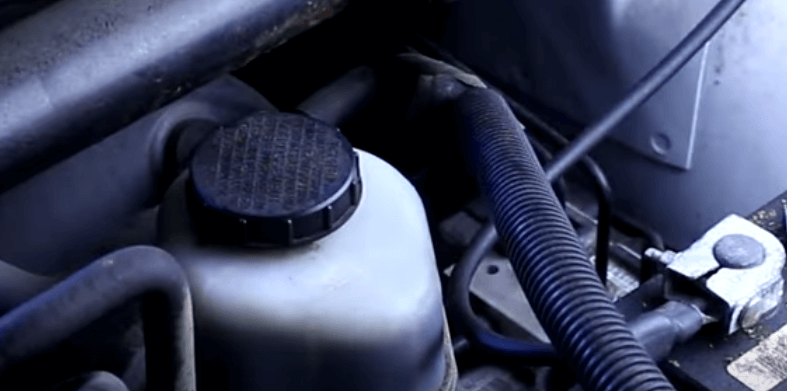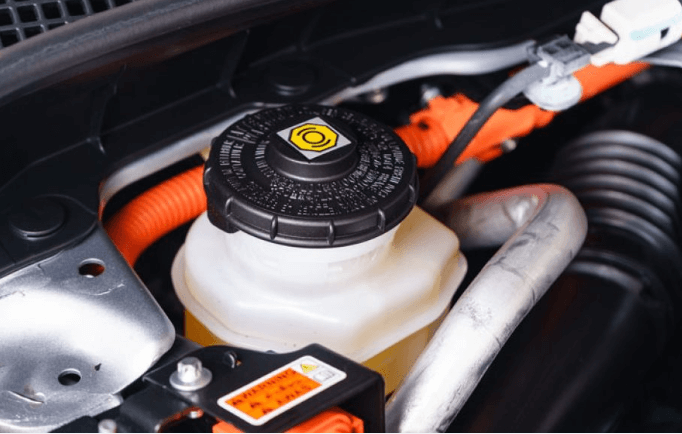Brake fluid is used in hydraulic brakes and clutches in cars. It is the lifeblood of the braking system in your car. Won’t it be nice if you are concerned a bit about its lifespan? Indeed, you will. That is why you ask this question: How long does brake fluid last? It is important to know how long brake fluids last in a car so that you can be prepared to make a replacement when necessary.
This blog post promises to delve deep into the lifespan of brake fluid. if you read to the end, you will know why it is necessary to change your brake fluid and when. I will also teach you the steps by step on how you can change the brake fluid by yourself.
If this interests you and you want to know more about it, join me when I dig deep into it.
How long does brake fluid last?
Brake fluid typically lasts 2 to 5 years, depending on factors like driving conditions and maintenance. Over time, it absorbs moisture, reducing its effectiveness and potentially compromising brake performance. Regular checks and adherence to vehicle manufacturer recommendations are essential for optimal brake fluid.
You are concerned about the lifespan of brake fluid. Well, you must do, because it is the lifeblood of the braking system. Brake fluid is a crucial component in your vehicle’s braking system, which is pivotal in ensuring your safety on the road. While it can last a very long time, experts recommend checking it regularly.
Generally, brake fluid should be inspected at least every two years, or 30,000 miles, and replaced if necessary. Waiting longer might not be ideal, as brake fluid is hygroscopic, meaning it absorbs moisture over time. After 12 months, moisture accumulation starts, affecting the fluid’s efficiency. Ideally, a brake fluid change is recommended every four to five years or every 30k miles. Neglecting this could lead to a decline in braking performance.
Within three months, you might notice changes in your brake fluid’s colour and consistency, indicating the need for attention. Brake fluid is a silent hero in your vehicle’s safety playbook, and regular check-ups would ensure it continues to perform optimally. So, would you risk your safety by overlooking this simple yet crucial maintenance task? The choice is yours, but a well-maintained brake fluid system can make all the difference in your driving experience.

Is it necessary to change the brake fluid every two years?
Taking care of your vehicle involves more than just regular oil changes and tyre rotations; it also means paying attention to the often-overlooked brake fluid. Many experts suggest that it’s a good idea to flush the brake system with fresh fluid every 2–3 years. So, yes, it is necessary to change the brake fluid every two years. This routine maintenance ensures optimal brake performance and safety on the road.
Is it necessary to change the brake fluid every two years? Well, the consensus is that brake fluid should be checked regularly and changed every one to two years. Over time, brake fluid can accumulate moisture, compromising its effectiveness. A brake fluid flush every two years, or 20,000 miles, is a proactive approach to maintaining the health of your braking system.
You might wonder if it’s essential to change brake fluid so frequently. The truth is that neglecting this aspect can lead to issues like brake fade and diminished stopping power. It’s not about being overly cautious; it’s about ensuring your safety on the road. You are well aware of the danger of a faded brake on the road. Even if you’re not an avid driver, a brake fluid flush every four to five years is recommended, or every 30,000 miles or 2 years, depending on which comes first.
Regularly changing brake fluid is not just a preventive measure; it’s an integral part of responsible vehicle ownership. The need for a brake fluid flush every 2 years is not just a suggestion; it’s a crucial step to maintain the integrity of your braking system. So, the next time you’re thinking about routine maintenance, remember to include changing your brake fluid to replace the old with the new, ensuring a smooth and safe journey on the road.
How to change brake fluid
Hey there, DIY enthusiasts! Today, I am diving into the nitty-gritty of car maintenance, i.e., changing brake fluid. It’s a crucial task that ensures your brakes perform at their best, keeping you safe on the road. So, roll up your sleeves and get ready to tackle this maintenance job.
You must understand that changing brake fluid is like giving your brakes a refreshing drink. Over time, brake fluid absorbs moisture, leading to decreased braking performance. Regularly replacing brake fluid helps maintain optimal brake function and ensures a smooth, responsive ride. Here is a step-by-step guide you will follow when changing your brake fluid.
1. Gathering the Essentials
Before you start, you will gather tools such as a brake fluid bleeder kit, a wrench, a turkey baster or syringe, a container for old fluid, and, of course, a fresh bottle of brake fluid. Safety comes first, so don’t forget your gloves and safety glasses.
2. Locating the Brake Fluid Reservoir
Pop open the hood and locate the brake fluid reservoir. It’s usually near the firewall, on the driver’s side. Once you’ve found it, wipe away any dirt or debris to prevent contamination when you open it.

3. Removing the Old Brake Fluid
Time to get hands-on! Use the wrench to carefully remove the cap from the brake fluid reservoir. This ensures smooth fluid flow during the replacement process. Now, using the turkey baster or syringe, remove as much old brake fluid as possible. Be cautious not to spill any on your car’s paint; brake fluid can be tough on that finish!
4. Bleeding the Brake System
To replace the old fluid, attach the brake fluid bleeder kit to the brake bleeder valve. Crack open the valve and let the old fluid drain into the container. Keep an eye on the fluid colour you want it to be clear. Once the fluid runs clean, close the valve.
5. Refilling with Fresh Brake Fluid
Now, it’s time to replenish your braking system with the good stuff. Pour the fresh brake fluid into the reservoir, ensuring you don’t overfill. Double-check your vehicle’s manual for the recommended brake fluid type.

6. Testing Your Brakes
With the new fluid in place, it’s time to put your brakes to the test. Start your car and gently press the brake pedal a few times. This helps remove any air bubbles in the brake lines. Keep an eye on the brake fluid reservoir level and top it off if needed.
7. Securing the Brake Fluid Reservoir
Once you’re satisfied with the brake pedal’s responsiveness, secure the cap back onto the brake fluid reservoir. Tighten it with the wrench, making sure it’s snug.
You’ve just mastered the art of changing brake fluid! Give yourself a pat on the back; your car and, more importantly, your safety will thank you for this vital maintenance task.
You can also read: What is brake fluid used for? A Complete Expert Guide.
This post has equipped you with the lifespan of brake fluid and why it is necessary to change it. when you are to change the brake fluid in your car. Also, I took you on a step-by-step approach to changing your brake fluid by yourself. Consult this blog for more information on vehicle brake fluids and any other related issues concerning your car’s maintenance. Share your thoughts with me in the comment section.

With Over 7 years of experience dealing with car owners as a car lease agent, I have gained matchless car knowledge to help every car owner know what exactly is wrong with their cars.


